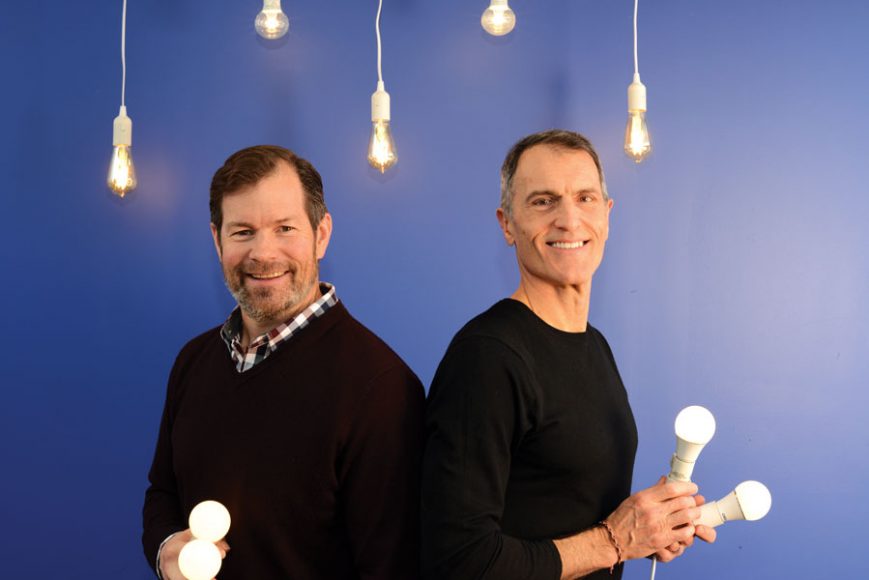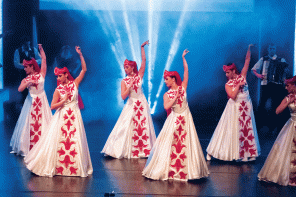Armonk’s BFranklin hopes to bring the Warby Parker model to LED light bulbs. The new company has a co-founder with a familiar name and professional experience with lights of a different kind.
For 15 years as goalie of the New York Rangers, Mike Richter hovered in the net with a light perched tauntingly on the glass just feet behind him at Madison Square Garden. As a member of the Rangers’ 1994 Stanley Cup Championship team, Richter was quite good at keeping opposing teams from firing up that light by sneaking the puck past him. But Richter’s new goal is in some ways the opposite. He’d like to see the LED lightbulbs from his company light up homes throughout the country.
Richter, however, deftly avoids sports metaphors when meeting with WAG in December to discuss the big plans for BFranklin. He and co-founder Richard Hulme keep the focus on a system they
believe can help people save money and reduce their carbon footprint.
“I’ve always been interested in sustainability across my life — pre-, during and post-hockey. This is something I care about,” Richter says. “Having finished my first career, I wanted to do something I believed in.”
A Greenwich resident, Richter first went back to school after retiring from hockey. He graduated from Yale University with a degree in ethics, politics and economics, with a concentration in environmental politics. BFranklin is one of multiple companies Richter is involved with focused on sustainable energy.
Richter, Hulme and co-founders Konstantin Braun and Rob Krugel launched BFranklin last spring. Through the company’s website, BFranklin offers to send customers a free kit with 12 different types of LED light bulbs for a 30-day home test period. In that time, people can try out different types of bulbs to find the right fit.
LED lightbulbs, as BFranklin explains in company literature, use about 15 percent of the electricity of the more-common incandescent bulbs. Yet the pesky incandescent bulb still dominates living rooms and porches. Federal data shows that, at the end of 2017, just 27 percent of homes utilized LED light bulbs, while only 1 percent used LED lightbulbs exclusively.
“There’s something that feels wrong about having this superior technology — this is not an experiment, we know what the things can do — yet it is not being used,” Richter says.
The main hurdle, Hulme explains, is customer confusion and a lack of awareness. People are rarely conversant in the language of light bulbs. You’re more likely to just carry a burned-out bulb to the grocery store and hope to find a match. BFranklin’s “Try Light Kit” wants to put an end to that.
“The kit solves two problems,” Hulme says. “It gets the light bulbs into people’s hands and helps them realize that this technology is something they could accept in their homes. And it enables them to pick the right bulbs for different applications throughout their home without having to know it’s called the BR40, or a G25, B11, or A19.”
“We use simple labeling technology,” Hulme jokes, “The number 1.”
The bulbs are indeed marked 1 through 12, and the kit comes with a handy grid for you to write how many “1s” “2s” and “3s” you need to outfit your home. You can then order those bulbs from BFranklin’s website and send the kit back in a pre-paid package.
The bulbs will cost slightly more upfront. Incandescent 60-watt bulbs can be purchased for as little as a buck, while the equivalent on BFranklin, “Lightbulb 1,” starts at $4. But Lightbulb 1 is far more energy efficient, and thus can pay you back quickly, Hulme notes. Just that single bulb, the company estimates, could save homeowners and renters $6 a year on electricity costs. The total savings from LED bulbs throughout a home could reach $500 per year.
That’s the economic argument. Hulme also argues the different options in the kit will help people find better lighting for each room of their home. The newest generation of LED bulbs — which have an average lifespan of 20 years —produce a warmer, softer light than their more spartan predecessors.
Then there’s the environmental benefit. More efficient lighting means less electricity consumed, cutting down on an individual’s carbon footprint.
The quick payback and easy installation is what made LED bulbs especially appealing to Richter. For people alarmed by reports forecasting the devastating impacts of climate change, LED lights offer a way to take action.
“This is the single best place to start. It’s the ground floor,” Richter says. “It’s got the quickest payback and it is the easiest thing to talk about. We’re talking about screwing in a light bulb.”
BFranklin is one of several efforts in improving energy efficiency from Richter. In 2007, he co-founded Environmental Capital Partners, a $100 million private equity fund focused on resource efficiency. In 2011, he created Healthy Planet Partners, a fund to finance and manage renewable energy for commercial buildings. He is also president of Brightcore Energy, which is focused on doing LED retrofits of commercial and industrial buildings. Hulme, of Pound Ridge, previously worked as a consultant to top global companies, including PricewaterhouseCoopers and IBM.
BFranklin operates at an office in an Armonk corporate park. The name is a nod, in part, to Richter’s Philadelphia roots but also to honor the innovative nature of the Founding Father. Asked about the similarities between hockey and his new venture, Richter says “the efficiency and the health aspect of this relates very much to what I used to do. Performance is eliminating waste in one way or another and that’s what we do.”
The benefits are clear for anyone, he adds.
“We have produced over the last century an awful lot of greenhouse gases and an awful lot of pollution. What can the average person do?” Richter says. “This is a way of doing something. It’s not about hugging trees. It is about living better, having a home that performs better and getting paid to do it in the process. There are no other options quite like it.”
For more, visit bfranklinhome.com.




